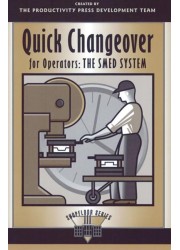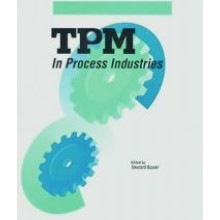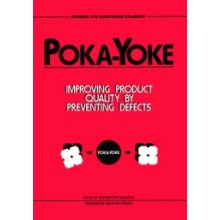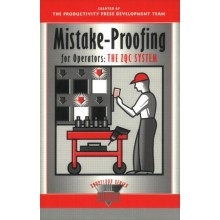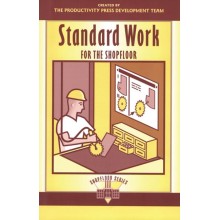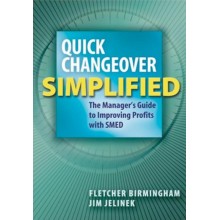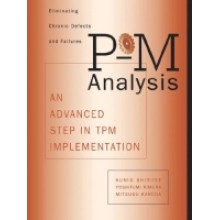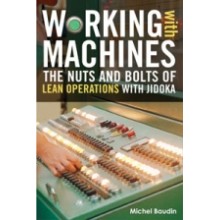Quick Changeover for Operators: The SMED System
Quantity:
-
Add to Compare
The powerful knowledge contained in this book can make your workplace more productive, your job simpler, and everything more satisfying. It's about how to do equipment or product changeovers in record time--often in less than 10 minutes. The method you'll learn here is called SMED, short for "Single-Minute Exchange of Die" (the "single" here means a single-digit number of minutes).
Quick Changeover for Operators was developed from a longer book, A Revolution in Manufacturing: The SMED System, written for managers. But when you get right down to it, you--the frontline production and assembly associates--are the ones who'll be most involved in implementing the SMED approach--and also the ones who'll most benefit from it. We've developed this book specifically to give you the SMED basics in a straightforward and interesting format. Once you understand these basics, you'll be able to see how they might apply to your specific situation at work.
This book presents an overview of the reasons why SMED is important for companies and employees, sets out the three basic stages of SMED, and then devotes a separate chapter to each of these stages. The first chapter of the book is like an "owner's manual" that tells you how to get the most out of your reading time by using the margin assists, summaries, and other features of the book to help you pull out exactly what you need.
One of the most effective ways to use this book is to read and discuss it with other employees. We've deliberately planned the book so that it can be used this way--by organizing the book into chunks of information that can be covered in a series of short session or in one longer event. (Most chapters can be covered in a single session; Chapter 5 and 6 contain a lot of samples, and each should probably be covered in two sessions.) Each chapter includes reflection questions to stimulate group discussion. A Learning Package is also available, which includes a leader's guide, overhead transparencies to summarize major points, and color slides showing examples of SMED applications in different kinds of companies.
Publisher's Message
Chart: SMED's Conceptual Stages and Practical Techniques
Chapter 1 : Getting Started
Chapter 2 : Important Terms and Concepts
Chapter 3 : Getting Ready for SMED
Chapter 4 : Stage 1: Separating Internal and External Setup
Chapter 5 : Stage 2: Converting Internal Setup to External Setup
Chapter 6 : Stage 3: Streamlining All Aspects of the Setup Operation
Chapter 7 : Reflections and Conclusions
About the Author
Write a review
Your Name:Your Review: Note: HTML is not translated!
Rating: Bad Good
Enter the code in the box below:
Copyright © 2014 Engineering Standards Bureau. All Rights Reserved.
Developed By Zoom Into Web


